Overview of Chugach State Park
Located in Southcentral Alaska, Chugach State Park is an accessible wilderness gem that stands as a testament to the state’s rugged beauty. It serves as a majestic backyard for the city of Anchorage, with its western boundary just a few miles from the downtown area. The park’s vast size and diverse landscape offer a microcosm of Alaskan wilderness, making it a major hub for outdoor recreation for both locals and tourists.
Location and Size of the Park
Chugach State Park is situated almost entirely within the Municipality of Anchorage, stretching from the Knik Arm in the north to the Turnagain Arm in the south. It is defined by the impressive peaks and valleys of the western Chugach Mountains. The park encompasses approximately 495,000 acres of land, a stunning mix of glaciated mountains, alpine tundra, coastal marshes, and pristine lakes. This makes it a crucial part of the urban landscape while offering a genuine wilderness experience.
Why It’s One of the Largest State Parks in the U.S.
With nearly half a million acres, Chugach State Park is one of the four largest state parks in the United States, rivaled only by Wood-Tikchik State Park (also in Alaska) and Anza-Borrego Desert State Park in California. Its immense size is a result of a concerted effort to preserve the scenic and recreational value of the Chugach Mountains and protect the water supply for Anchorage. The sheer scale of the park’s acreage allows it to contain a remarkable variety of landscapes and ecosystems, from sea-level coastal areas to towering peaks over 8,000 feet.
Quick Facts
- Established Date: August 6, 1970
- Acres: Approximately 495,000 acres (2,004 square kilometers)
- Nearby Cities: The park borders and is easily accessible from Anchorage, Eagle River, Chugiak, and Girdwood.
Getting to Chugach State Park is remarkably easy, making it a popular choice for anyone in the Anchorage area. The park’s immense size means there are multiple entry points, offering access to different types of terrain and activities.
Table of Contents
Closest City: Anchorage, Alaska
Anchorage serves as the primary gateway to Chugach State Park. The park’s western boundary is just a few miles from the city’s eastern edge, meaning you can go from an urban setting to a vast wilderness in less than 20 minutes by car. This proximity is one of the park’s biggest draws, allowing visitors to easily combine a city-based trip with a true Alaskan adventure.
Best Routes and Entry Points
The best route to take depends on which part of the Chugach State Park you wish to explore.
- For the Anchorage Hillside Trails (Flattop, Glen Alps): From downtown Anchorage, the most direct route is to take O’Malley Road or Huffman Road east toward the mountains and then follow the signs for the trailheads. The Glen Alps Trailhead is one of the most popular and provides access to Flattop Mountain, offering incredible panoramic views of Anchorage, Cook Inlet, and the Alaska Range.
- For the Eagle River Area: Heading north from Anchorage on the Glenn Highway (AK-1) will take you to the Eagle River Nature Center. This is a great access point for family-friendly hikes and river views.
- For the Turnagain Arm Corridor: Driving south on the Seward Highway (AK-1) from Anchorage will take you along the scenic Turnagain Arm, which forms the southern boundary of the park. This route provides access to popular spots like Bird Creek and Indian Creek, offering opportunities for hiking and wildlife viewing.
- For Eklutna Lake: Take the Eklutna exit at Mile 26 on the Glenn Highway and follow the road 10 miles into the park. This is a well-known area for kayaking, biking, and hiking along the picturesque, glacially-fed lake.
Parking and Accessibility Tips
- Parking: Most of the major trailheads and access points within Chugach State Park have designated parking lots. However, many of these lots require a day-use parking fee of around $5. This can be paid on-site using an honor system envelope, or you can purchase an annual park pass for a single vehicle.
- Accessibility: While much of Chugach State Park is rugged backcountry, there are several trails and viewing areas that are accessible to all.
- Glen Alps: The Glen Alps Trailhead features a wheelchair-accessible, paved loop trail with a viewing deck that provides stunning vistas of the city and surrounding landscape.
- Eagle River Nature Center: This area has an accessible nature trail with interpretive signs and a viewing platform overlooking the river, which is a great place to watch for salmon in the summer.
- Thunderbird Falls: The trail to Thunderbird Falls is a popular and relatively easy hike with a boardwalk and viewing areas that are generally accessible to most visitors.
Chugach State Park is a hiker’s paradise, offering an incredible variety of trails that range from short, easy walks to challenging multi-day treks. Here are three of the park’s most iconic hiking trails, each providing a unique and unforgettable Alaskan experience.
1. Hiking Trails
Flattop Mountain Trail
- Why It’s Popular: The Flattop Mountain Trail is the most-climbed mountain in Alaska and the most popular hike in Chugach State Park. Its popularity stems from its accessibility, proximity to Anchorage, and the truly spectacular panoramic views from the summit. On a clear day, you can see the entire city of Anchorage, the Knik Arm, Turnagain Arm, Cook Inlet, and the Alaska Range, including Denali.
- Difficulty: The 1.5-mile trail (one way) is considered moderately challenging. The first half is relatively easy, but the final ascent to the summit involves a steep, rocky scramble that requires some hand-over-foot climbing.
- Key Features: The trail is a fantastic example of alpine tundra. Wildflowers bloom in the summer, and you’re likely to spot wildlife like marmots, arctic ground squirrels, and occasionally Dall sheep on the surrounding peaks.
Eagle and Symphony Lakes Trail
- Why It’s Popular: This trail is renowned for its incredible payoff: two stunning, distinctively colored lakes nestled in a glacial valley. Eagle Lake is a striking blue, while the nearby Symphony Lake is a milky turquoise, a result of glacial silt. The stark contrast between the two lakes, separated by a narrow rock wall, is a breathtaking sight.
- Difficulty: The trail is a moderate 10.5-mile round trip. The path is well-maintained and follows Eagle River before climbing a small pass.
- Key Features: The hike takes you through a beautiful valley surrounded by towering peaks. Hikers often spot Dall sheep on the cliffs above the trail and can enjoy the tranquility of two of the park’s most beautiful alpine lakes.
Crow Pass Trail
- Why It’s Popular: The Crow Pass Trail is an iconic point-to-point hike, considered one of the classic backpacking trips in Alaska. It is the original Iditarod Trail and offers a genuine sense of solitude and wilderness. The full trek spans 23 miles, taking you from the Chugach Mountains near Girdwood to the Eagle River Nature Center.
- Difficulty: This is a strenuous and challenging hike, recommended for experienced backpackers. It involves a climb over Crow Pass, glacier crossings (including the stunning Raven Glacier), and multiple river fords, including the challenging Eagle River crossing near the end of the trail.
- Key Features: The trail is a geological and scenic masterpiece, showcasing cascading waterfalls, vibrant green meadows, alpine passes, and incredible glacial views. Wildlife sightings of Dall sheep, bears, and moose are common. For those not ready for the full trip, a shorter hike to Crow Pass and back is a popular and rewarding day trip.
Chugach State Park is a fantastic place to see some of Alaska’s most iconic animals in their natural habitat. Its diverse landscape, from coastal areas to high alpine ridges, supports a wide range of species.
Animals You Can Spot
- Moose: These are the most common large mammals in the park and the surrounding Anchorage area. You’ll often see them browsing on willows and other vegetation along the trails or in the more forested areas. The Eagle River Nature Center and the Powerline Pass trail are particularly good locations for moose viewing.
- Bears: Both black and brown (grizzly) bears inhabit the Chugach State Park. Black bears are more prevalent in the forested areas, while brown bears are generally found in the higher alpine regions. Encounters are rare, but it’s important to be aware and prepared, as a sighting can be a memorable part of your trip.
- Dall Sheep: Look to the steep, rocky slopes and cliffs for these pure-white sheep. They are often seen on the peaks above the Seward Highway along the Turnagain Arm, particularly in the Bird Ridge and McHugh Creek areas. Their ability to navigate the rugged terrain is a remarkable sight.
- Bald Eagles: Soaring high above the coastlines and river valleys, bald eagles are a common sight. The Turnagain Arm area is a prime location to spot them as they fish or perch in tall trees.
- Other Wildlife: Keep an eye out for smaller mammals like marmots and arctic ground squirrels on the high-elevation trails. You may also spot beavers, porcupines, and various bird species.
Safety Tips for Wildlife Encounters
While seeing wildlife is exciting, safety should always be your top priority.
- Make Noise: The best way to avoid a surprise encounter is to make your presence known, especially in dense brush or on blind corners. Call out, sing, or talk to your hiking partners.
- Carry Bear Spray: It’s highly recommended to carry bear spray in an easily accessible location and know how to use it. This is a last-resort deterrent but an important one to have.
- Give Them Space: If you spot an animal, give it a wide berth. If your presence causes the animal to change its behavior, you are too close. Do not approach or attempt to feed any wildlife.
- Never Run: If you have an encounter with a bear, never turn and run. Stand your ground, speak calmly in a firm voice, and slowly back away. Make yourself look as large as possible.
- Moose Behavior: Be especially cautious around moose, as they cause more human injuries in Alaska than bears. A moose with its ears laid back or hairs raised on its shoulders is a warning to back away immediately. Never get between a cow and her calf.
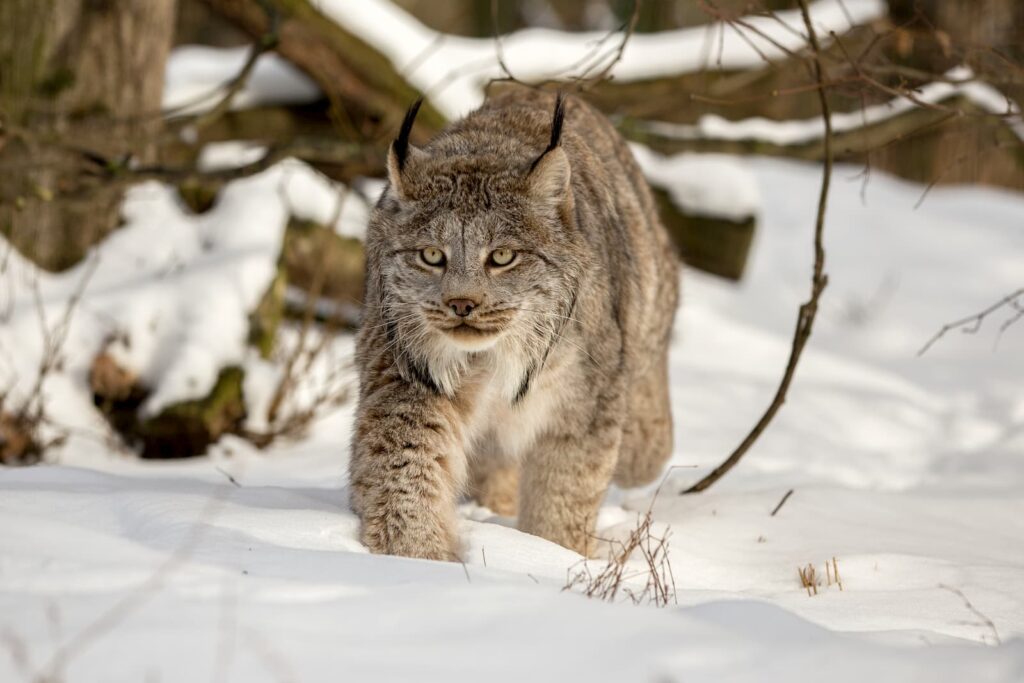
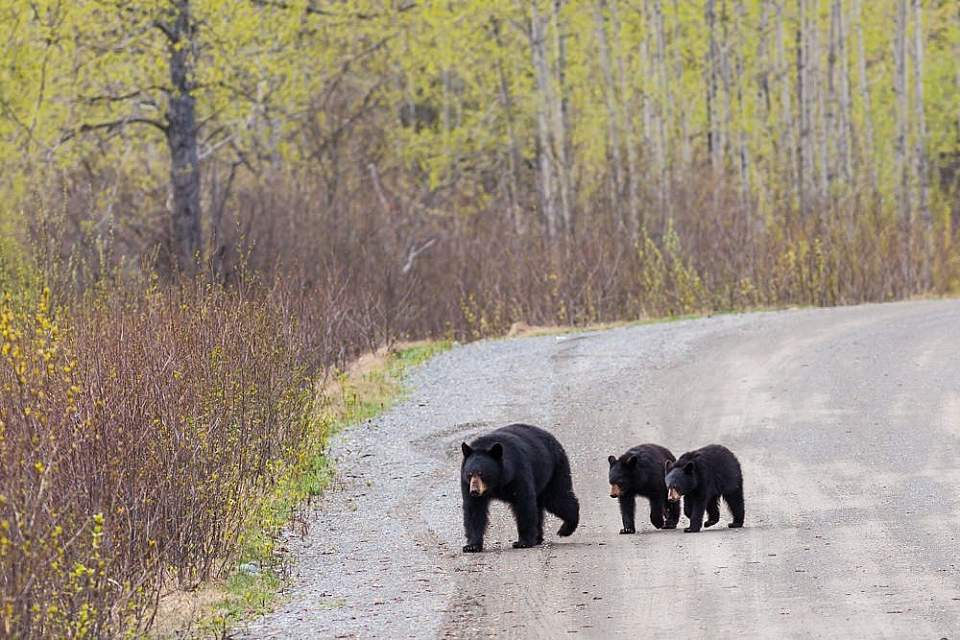
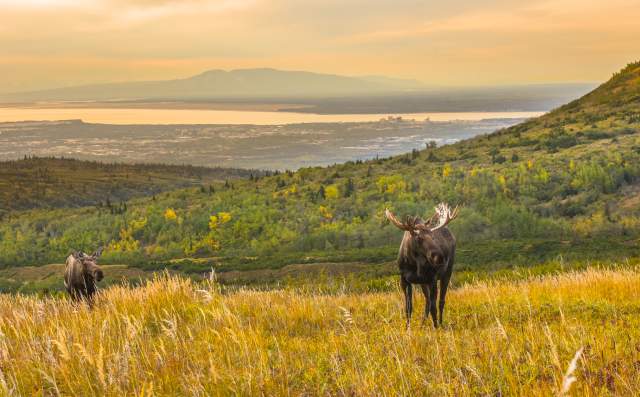
Chugach State Park offers a range of camping experiences, from convenient front-country campgrounds with basic amenities to remote backcountry sites for a true wilderness escape.
Designated Campgrounds
For those who prefer to have a car-accessible base camp, Chugach State Park has several well-maintained campgrounds. These sites are ideal for families, RV travelers, and anyone looking for a more comfortable camping experience with easy access to hiking trails and other recreational opportunities.
- Eklutna Lake Campground: This is a popular choice, with over 50 sites nestled near the beautiful, glacially-fed Eklutna Lake. Campers can enjoy kayaking, fishing, and biking on the extensive lakeside trail.
- Eagle River Campground: Located just a short drive from Anchorage, this campground is known for its peaceful, wooded setting and proximity to the loud, rushing waters of the Eagle River. It’s a great family-friendly option with many sites for tents and RVs.
- Bird Creek Campground: Situated on the scenic Turnagain Arm, this campground offers stunning views of the coastal mountains and the bore tide that rushes up the arm. It’s a great spot for fishing and is conveniently located near the Bird Creek Trailhead.
These campgrounds generally offer basic amenities like fire rings, picnic tables, and latrines. Visitors are expected to pack in their own food and water, though some campgrounds may have a water pump.
Backcountry Camping Rules
For the adventurous, Chugach State Park’s vast wilderness provides countless opportunities for backcountry camping. However, it’s important to practice Leave No Trace principles and follow specific park rules to protect the fragile environment and ensure your safety.
- Location: You are generally allowed to set up camp anywhere within the Chugach State Park’s backcountry, but it’s important to camp a safe distance away from designated trails, roads, and developed facilities.
- Campfires: Backcountry fires are typically prohibited, especially above the treeline, to prevent wildfires and protect the environment. It is essential to use a portable camp stove for cooking.
- Food Storage: Chugach is bear country. All food, trash, and scented items must be stored in bear-resistant containers or hung from a tree at least 10 feet off the ground and 4 feet from the tree trunk.
- Waste Disposal: All waste, including human waste and toilet paper, must be packed out or buried properly in a cathole at least 6-8 inches deep and 200 feet from water sources, trails, and campsites.
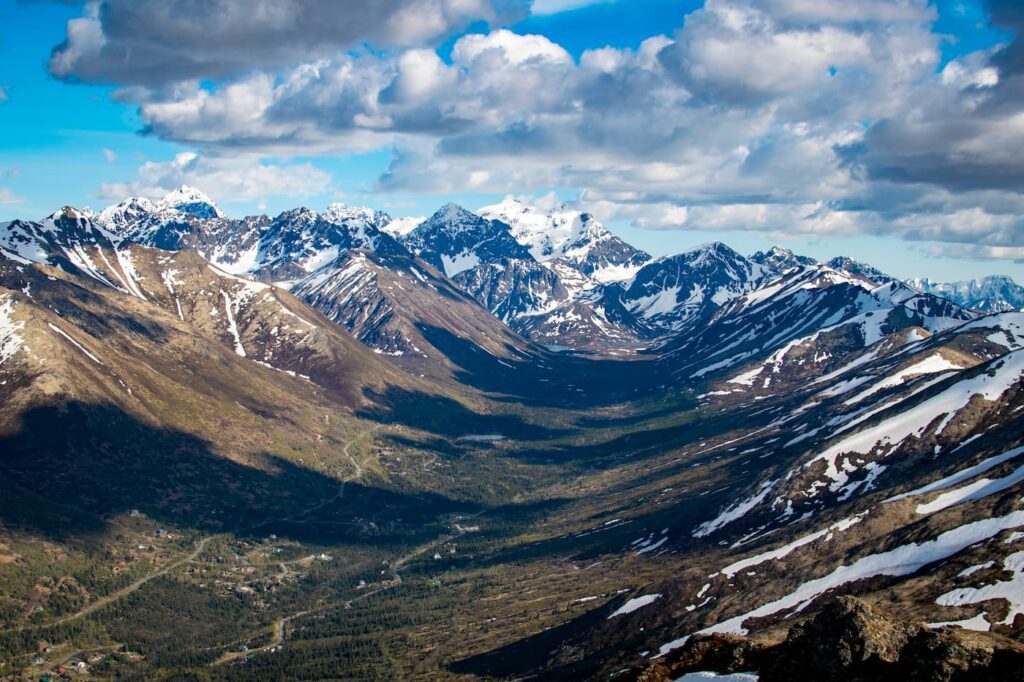
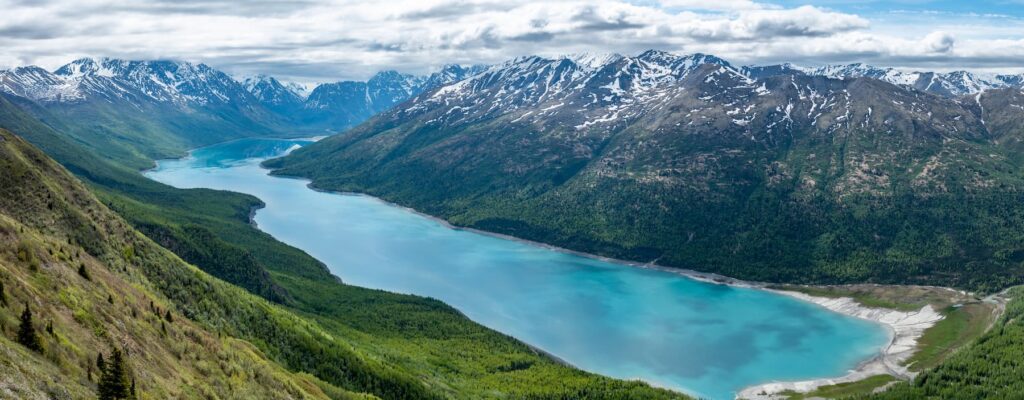
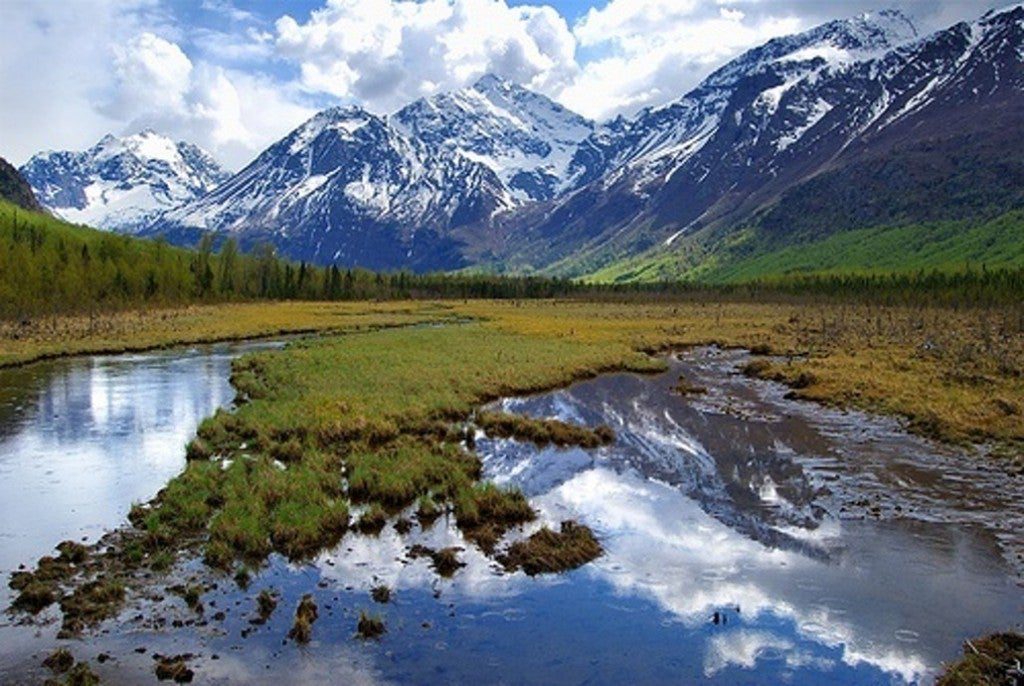

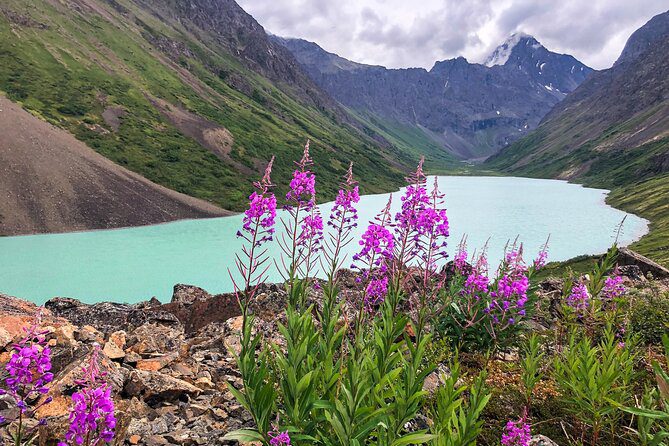
Backcountry camping in Chugach State Park requires self-sufficiency and a high degree of respect for the wilderness. Always let someone know your itinerary before you head out, and be prepared for rapidly changing weather conditions.
While summer is the most popular time to visit, Chugach State Park transforms into a snowy playground during the winter months, offering a completely different and equally stunning experience. Chugach State Park is a popular destination for those looking to embrace Alaska’s legendary snow and ice.
Skiing & Snowboarding
- Cross-Country Skiing: Chugach State Park boasts a vast network of trails that are ideal for cross-country skiing. Popular areas like the Anchorage Hillside and Eklutna Lake offer groomed trails for both classic and skate skiing, catering to all skill levels. The serene, snow-covered landscape and crisp air make for a perfect winter outing. Chugach State Park also provides access to some of the most challenging backcountry ski routes in Alaska, including the famous Crow Pass and Eklutna traverses.
- Downhill Skiing: Chugach State Park contains Arctic Valley Ski Area, a non-profit, volunteer-run ski resort just a short drive from Anchorage. Arctic Valley offers an authentic, local skiing experience on steep, ungroomed terrain, making it a favorite for advanced skiers and snowboarders. For a more resort-style experience, the nearby Alyeska Resort in Girdwood is also easily accessible from the park’s southern boundary and offers world-class downhill skiing.
Snowshoeing & Ice Climbing
- Snowshoeing: Snowshoeing is an excellent way to explore the Chugach State Park’s winter beauty at a more leisurely pace. Snowshoes allow you to access trails that would otherwise be difficult to navigate in deep snow. The Eagle River Nature Center offers a great network of trails for snowshoeing, as does the Glen Alps area, where you can follow the frozen “Powerline Pass” trail for spectacular views of the snow-covered landscape. It’s a great workout and a peaceful way to immerse yourself in the winter wilderness.
- Ice Climbing: For the truly adventurous, Chugach State Park’s frozen waterfalls and canyons become a playground for ice climbing. Popular spots can be found along the Turnagain Arm and in the Eagle River drainage. Several guiding companies in the Anchorage area offer beginner-friendly tours that provide all the necessary gear and instruction. This is an exciting and unique way to experience the frozen beauty of the Chugach State Park’s most dramatic features.
Chugach State Park is a land of stunning vistas, and the best way to appreciate its grandeur is by visiting some of its most scenic spots. These three locations offer a variety of landscapes and experiences, from high alpine overlooks to serene lakeside views.
Glen Alps Overlook
The Glen Alps Overlook is arguably the most accessible and rewarding viewpoint in Chugach State Park. Located on the Anchorage Hillside, it provides an awe-inspiring introduction to the Chugach State Park’s majesty without requiring a long hike.
- The Views: From the paved viewing deck, you’re treated to a spectacular panorama that stretches for miles. You can see the entire city of Anchorage sprawling below, framed by the sparkling waters of the Knik and Turnagain Arms. On a clear day, your gaze can extend all the way to the Alaska Range, revealing the towering presence of North America’s tallest peak, Denali. The overlook is a favorite spot for photographers, especially during sunset and on clear nights when the Aurora Borealis dances across the sky.
Eklutna Lake
Nestled in a remote glacial valley, Eklutna Lake is a serene and visually stunning destination. The lake’s striking turquoise color comes from glacial silt, or “rock flour,” suspended in the water, a byproduct of the nearby Eklutna Glacier.
- Activities: Eklutna Lake is a hub for outdoor activities, all set against a backdrop of towering, snow-capped mountains. The Eklutna Lakeside Trail is a popular 12.7-mile trail perfect for biking and hiking. You can rent kayaks or paddleboards to get out on the calm, pristine water, offering an unforgettable perspective on the surrounding landscape. The area also features a campground and public-use cabins, making it an excellent spot for an overnight stay.
Thunderbird Falls
Located on the northern edge of the Chugach State Park, Thunderbird Falls offers a short, family-friendly hike to a spectacular waterfall. The trail follows the edge of a dramatic canyon carved by Thunderbird Creek.
- The Hike: The main trail is an easy 1-mile walk (one way) that winds through a dense birch forest and along the rim of the canyon. The path leads to a viewing deck where you can take in the full 200-foot cascade of the falls. For the more adventurous, a short, steep side trail leads down to the base of the falls for an up-close and personal view. In the winter, the falls freeze into a magnificent wall of blue ice, offering a unique and beautiful sight for snowshoers and ice climbers.
Chugach State Park is a year-round destination, with each season offering a completely distinct and equally breathtaking experience. The best time to visit depends entirely on the activities you’re interested in and the type of scenery you want to witness.
Summer vs. Winter Experiences
- Summer (June – August): This is the peak season for a reason. The long days provide ample time for exploration, with sunlight often lasting well past 10 p.m. in June. The trails are free of snow, making hiking and biking accessible across the park. The landscape is a vibrant green, wildflowers are in full bloom, and wildlife is abundant and active. This is the best time for traditional outdoor adventures.
- Winter (November – March): Chugach State Park transforms into a serene, snow-covered landscape. While the temperatures drop and daylight hours are short, the scenery is magical. Winter is the time for snow sports, from groomed cross-country ski trails to backcountry skiing, snowshoeing, and even fat biking. The cold, crisp air and snow-dusted peaks create a quiet beauty that offers a completely different, and equally rewarding, experience.
Best Time for Hiking, Camping, and Photography
- Hiking and Camping: The ideal time for hiking and camping in Chugach State Park is from late May through September. The trails are generally clear of snow by late spring, and the weather is at its mildest. The months of July and August offer the warmest temperatures, but this is also when the trails are at their busiest. For a more peaceful experience, consider visiting in late May or early September when the crowds thin out.
- Photography: Every season offers unique photographic opportunities, but late summer and early fall (late August to late September) are a photographer’s dream. The alpine tundra bursts into vibrant reds, oranges, and yellows as the season changes. This “fireweed season” and the fall colors create a stunning contrast with the snow-capped peaks. The days are still long, but the sun is lower in the sky, providing beautiful, warm light for spectacular shots. Additionally, the crisp air and clear nights of late fall and winter provide the best chance for viewing the Northern Lights (Aurora Borealis) from locations like the Glen Alps Overlook.
A well-planned packing list is essential for a trip to Chugach State Park, as Alaska’s weather can be notoriously unpredictable. Even in the height of summer, a clear, sunny day can quickly give way to rain, wind, or even snow in the high elevations. The key to staying comfortable is dressing in layers and bringing the right gear for your planned activities.
Packing Essentials
- Clothing for Alaska’s Changing Weather:
- Base Layers: Your first layer of clothing should be made of moisture-wicking materials like merino wool or synthetics. Avoid cotton, as it holds moisture and can quickly lead to hypothermia if it gets wet.
- Mid-Layers: An insulating layer, such as a fleece jacket or a down vest, is crucial for warmth. It should fit comfortably over your base layer.
- Outer Shell: A waterproof and windproof jacket is an absolute must. This shell will protect you from rain and wind while allowing moisture from your body to escape. Waterproof pants are also a great idea for serious hiking.
- Hats, Gloves, and Socks: Even in summer, pack a warm hat and gloves for chilly mornings or high-elevation hikes. Bring multiple pairs of wool or synthetic socks to keep your feet dry and blister-free.
- Gear for Hiking & Camping:
- Sturdy Footwear: Waterproof hiking boots are highly recommended, especially for trails with stream crossings or muddy sections. Make sure your boots are well broken in before your trip.
- Backpack: A comfortable daypack is essential for carrying your layers, water, snacks, and other essentials. For overnight trips, you’ll need a larger backpacking pack.
- Bear Spray: This is a crucial safety item in Chugach State Park. You can purchase it at most local sporting goods stores in Anchorage. It’s a last resort but an important one to have readily available.
- Navigation: While many trails are well-marked, it’s wise to carry a physical map and compass in case your phone or GPS device loses power.
- Sun and Bug Protection: The sun can be intense in Alaska due to the long daylight hours, so bring sunscreen and sunglasses. Mosquitoes can be prevalent in summer, so pack a good bug repellent.
- Water and Food: Always bring more water and high-calorie snacks than you think you’ll need. A water filter is also a good idea for longer hikes, as you can refill from streams.
- First-Aid Kit: Carry a small first-aid kit with bandages, pain relievers, and any personal medications you may need.
Your adventure in Chugach State Park requires a few key safety precautions and an understanding of park regulations. While the Chugach State Park is wild, being prepared will ensure a smooth and safe trip.
Safety & Regulations
- Bear Safety Rules: Chugach State Park is home to both black and brown (grizzly) bears.
- Make Noise: Talk, sing, or clap, especially in areas with limited visibility to avoid surprising a bear.
- Travel in Groups: Hiking with a partner or group is safer than hiking alone.
- Carry Bear Spray: It’s highly recommended to have bear spray easily accessible and know how to use it.
- Store Food Properly: When camping, all food, trash, and scented items must be stored in bear-resistant containers or hung from a tree, well away from your camp. Never leave food unattended.
- Stay Calm: If you encounter a bear, do not run. Stand your ground, speak calmly, and slowly back away.
- Permit Requirements: For most recreational activities like day hiking, camping in a developed campground, or picnicking, a permit is not required. However, a small day-use parking fee is typically required at major trailheads. Permits are necessary for specific activities, including:
- Commercial use (e.g., guided tours, commercial photography).
- Organized events with more than 20 people.
- Research or scientific collection.
Nearby Attractions
The beauty of Chugach State Park is its incredible proximity to other major attractions, making it easy to create a varied itinerary.
- Anchorage City Highlights: As the Chugach State Park’s primary gateway, Anchorage offers a wealth of activities.
- Tony Knowles Coastal Trail: A scenic 11-mile paved trail along the coast, perfect for biking and walking.
- Alaska Native Heritage Center: A great place to learn about the history and culture of Alaska’s indigenous people.
- Anchorage Museum: Explore the art, history, and science of Alaska and the circumpolar north.
- Alaska Wildlife Conservation Center: A rehabilitation center that provides up-close views of Alaskan animals like bears, moose, and musk oxen in a natural setting.
- Other Alaskan Parks Close to Chugach State Park:
- Chugach National Forest: Located to the east of the State Park, this is the second-largest national forest in the U.S. and offers a vast amount of additional recreational opportunities.
- Kenai Fjords National Park: Located a few hours south of Anchorage near Seward, this park is home to a spectacular landscape of glaciers and abundant marine wildlife, best explored by a day cruise.
- Denali National Park and Preserve: A world-famous park located a few hours north of Anchorage, known for its incredible wildlife viewing and the towering presence of Denali, North America’s highest peak.
Conclusion: The Heart of Anchorage’s Wilderness
Chugach State Park is a true Alaskan treasure. It’s not just another park; it’s a vast, accessible wilderness that serves as the breathtaking backyard for Anchorage. What makes it a must-visit destination is its remarkable ability to offer a comprehensive Alaskan experience within minutes of a major city. From the high alpine peaks to the serene lakeside valleys, it presents a microcosm of the state’s rugged beauty and diverse ecosystems.
Whether you’re seeking a strenuous climb up Flattop Mountain, a peaceful bike ride along Eklutna Lake, or a chance to spot a moose in its natural habitat, Chugach State Park has an adventure for every visitor. Its convenient access, diverse trail system, and stunning scenic vistas make it an essential stop for anyone traveling to Alaska.
To ensure this beautiful park remains pristine for generations to come, we encourage all visitors to practice eco-friendly tourism and adhere to the Leave No Trace principles. These simple guidelines are the cornerstone of responsible outdoor recreation and are vital for protecting the Chugach State Park’s fragile environment.
- Plan Ahead and Prepare: Know the trail conditions, weather forecasts, and regulations before you go.
- Dispose of Waste Properly: Pack out all trash, including food scraps.
- Respect Wildlife: Observe animals from a safe distance and never feed them.
- Leave What You Find: Don’t take rocks, plants, or other natural objects as souvenirs.
- Be Considerate of Other Visitors: Be mindful of others on the trail and help preserve the peace and quiet of the wilderness.
By following these principles, you can help preserve the wild beauty of Chugach State Park, ensuring it remains a sanctuary for wildlife and a source of wonder for all who visit.

